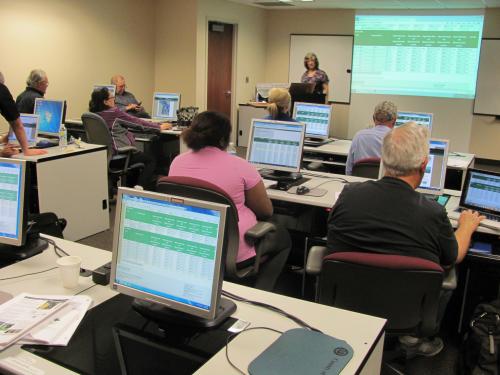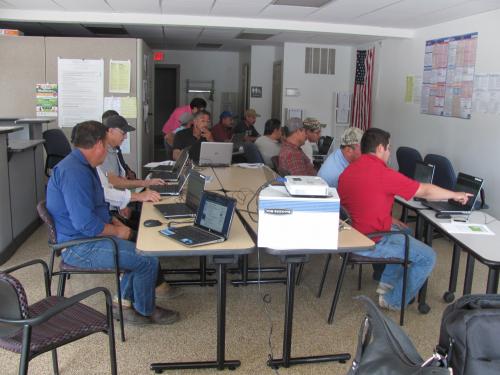West central Michigan small fruit regional report – June 30, 2015
Strawberry harvest has continued in west central Michigan and small quantities of blueberries are already harvested in Allegan and other southern counties.
Although we have observed intense rains in the area, they have been localized with some places reporting more than 1 inch of rain and others reporting only slight showers with minimal accumulation. However, these scattered rains are interfering with strawberry and blueberry harvest, and causing strawberry fruit rots to affect fruit quality.
Blueberry harvest started in southwest Michigan and during the past week, small quantities of early season blueberry varieties like Weymouth, Bluetta, Early Blue, etc., were harvested. Currently, fruit size and quality is good. Raspberries, on the other hand, are ripening fast and harvest is getting closer. So far, no major problems have been observed or reported by growers.
Blueberry problems observed during the past week are related to a large emergence of cranberry fruitworms in Allegan and Van Buren counties. Cranberry fruitworm flight is a little late in the season. Growers need to be aware that fruitworm damage may occur if insecticides are not applied in fields where large populations of cranberry fruitworm have been showing up in pheromone traps.
If the second insecticide application against fruitworms has not been applied yet, it is recommended to do it 80 to 100 growing degree days (GDD) base 50 degrees Fahrenheit after the pick of adult fruitworm emergence. That application may coincide with the application against the blueberry maggots and with the first application against arriving spotted wing Drosophila (SWD) flies. Taking into consideration the weather conditions, temperature and chances of rain and the proximity of harvest, any of the recommended pyrethroid insecticides or Lannate may be a good choice. However, for a complete list of recommended products and doses, please consult the “2015 Michigan Fruit Management Guide” (Michigan State University Extension Bulletin E0154). You may also call your local MSU Extension office for assistance.
We are monitoring the progress of SWD arrival in west central Michigan with traps deployed at strawberry and blueberry fields in Ionia, Kent, Ottawa and Allegan counties. So far, no SWD have been found in these locations. However, during the past week we have observed Drosophila flies resembling SWD in some traps. A close examination of these specimens indicated they are not SWD. Although the size and color of the body is very similar, the dark bands on the fly’s abdomen are not continuous, but broken. Also, the size and shape of the ovipositor is different. We recommend being careful when identifying trapped flies. If you need help with SWD identification, visit the MSU Spotted Wing Drosophila website or call your local MSU Extension office for assistance.
SWD workshop training update
We completed two SWD workshops for this season. The first workshop was June 15 at the Ottawa County Fillmore Complex in West Olive, Michigan. The training was attended by 24 growers and it was delivered in English. The second workshop was June 27 at the MSU Trevor Nichols Research Center and at the Michigan Works! computer training facilities in Fennville, Michigan. They were taught in Spanish and were attended by 18 Hispanic blueberry growers. Both workshops were a success. During the hands-on session, growers learned to use MSU Enviro-weather and information on insecticide characteristics to program insecticide applications based on the weather forecast, temperature and probability of rain. We may offer another SWD workshop, but it will depend on growers’ needs or requests.
Blueberry growers using MSU Enviro-weather to program insecticide applications based on the weather forecast, temperature and probability of rain.
Hispanic blueberry growers learning to use MSU Enviro-weather to program insecticide applications.



 Print
Print Email
Email




